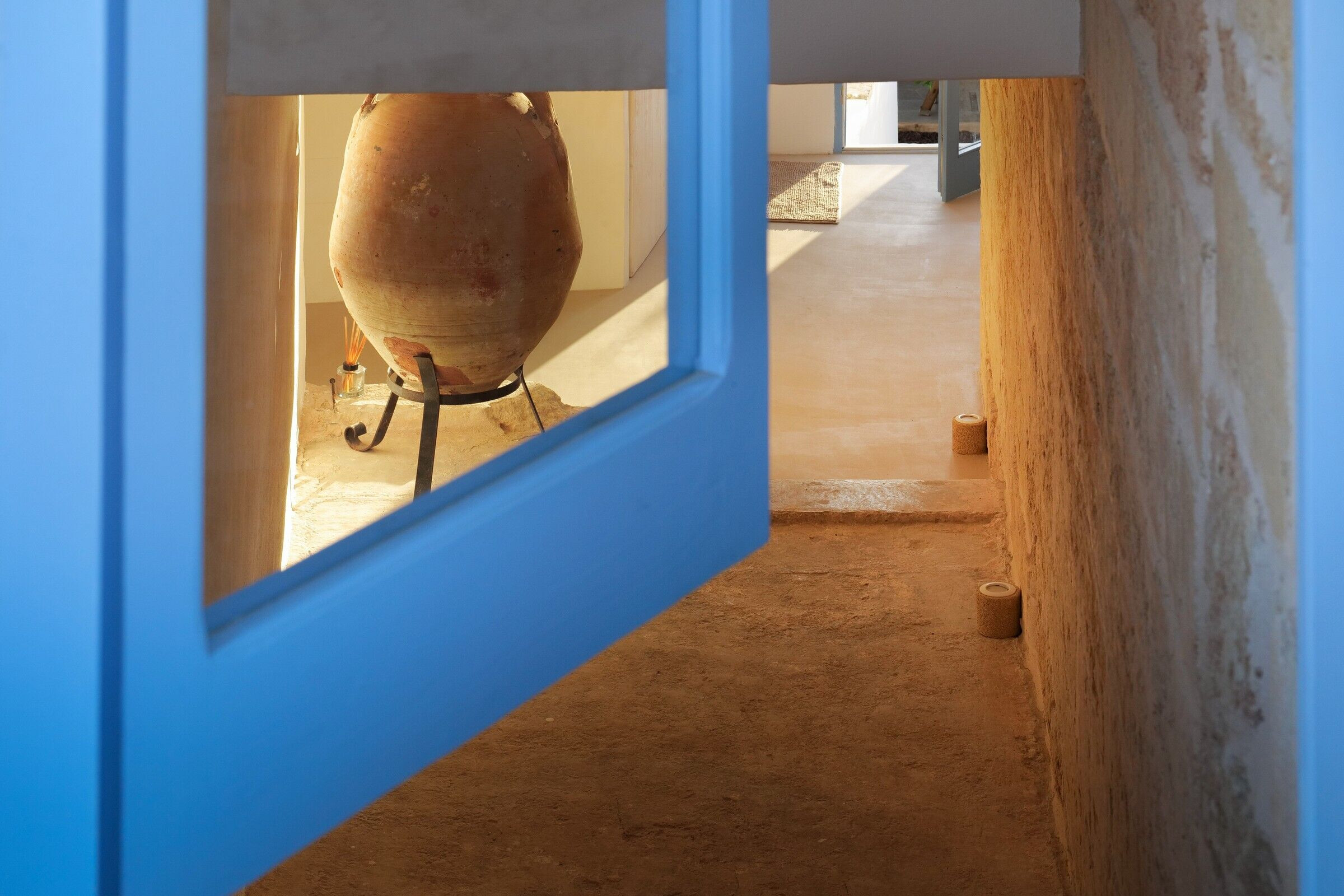In Montesardo, a typical small village in the municipality of Alessano and enclosed by mighty medieval walls, lies L’Aranceto. A succession of rooms built around an ancient orange grove gives life to the small Acqua di Puglia hamlet. The focal point of the house is the water basin obtained from an ancient, pre- existing cistern, positioned in the shade of the orange tree whose thick foliage contrasts with the boundary wall built of Carparo ashlars at the beginning of the 19th century. A typical white Mediterranean staircase, bordered by a flowerbed full of succulents leads to the upper rooms and the beautiful sunny terrace, from which on a clear day it is possible to see the sea and mountains of Albania.
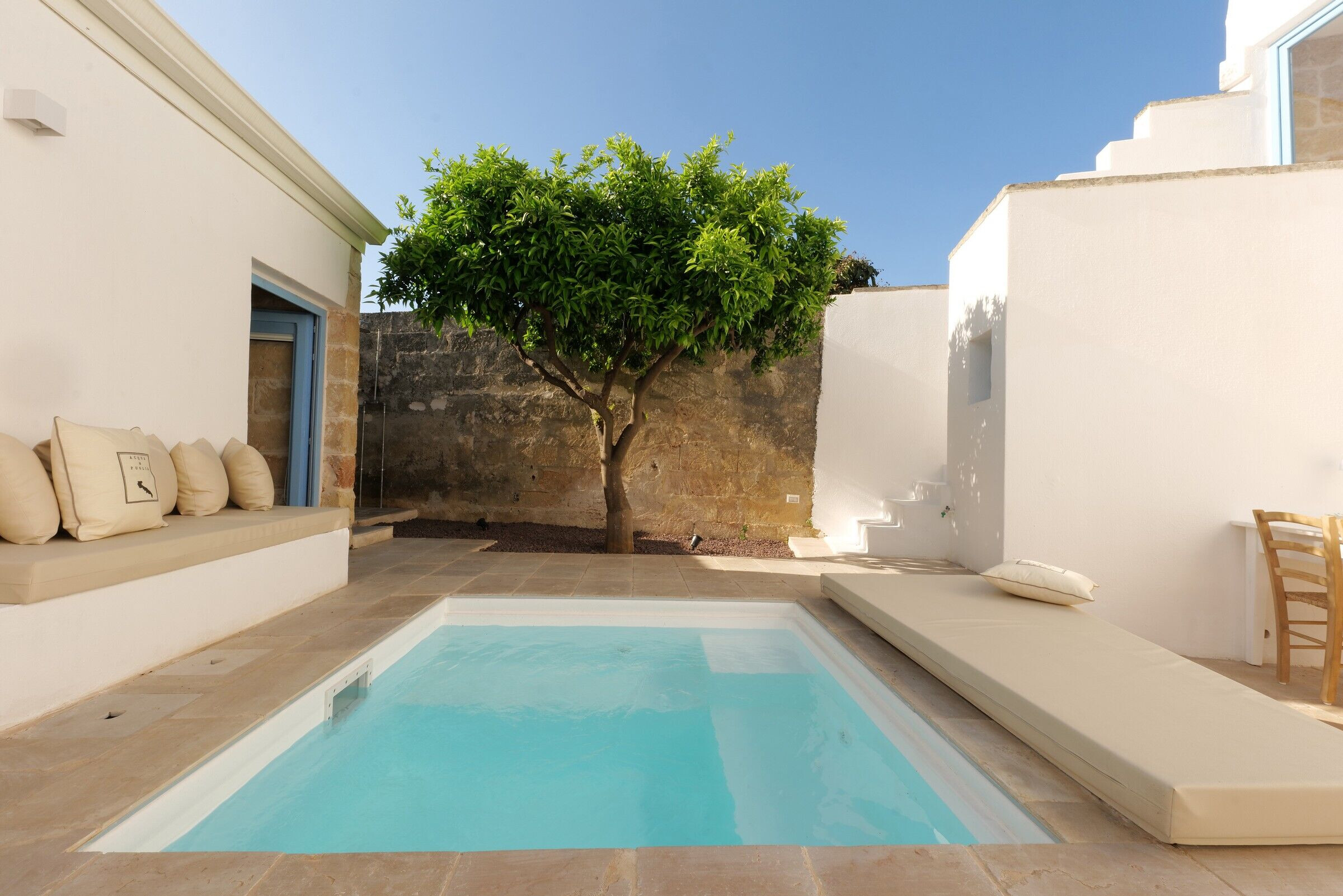
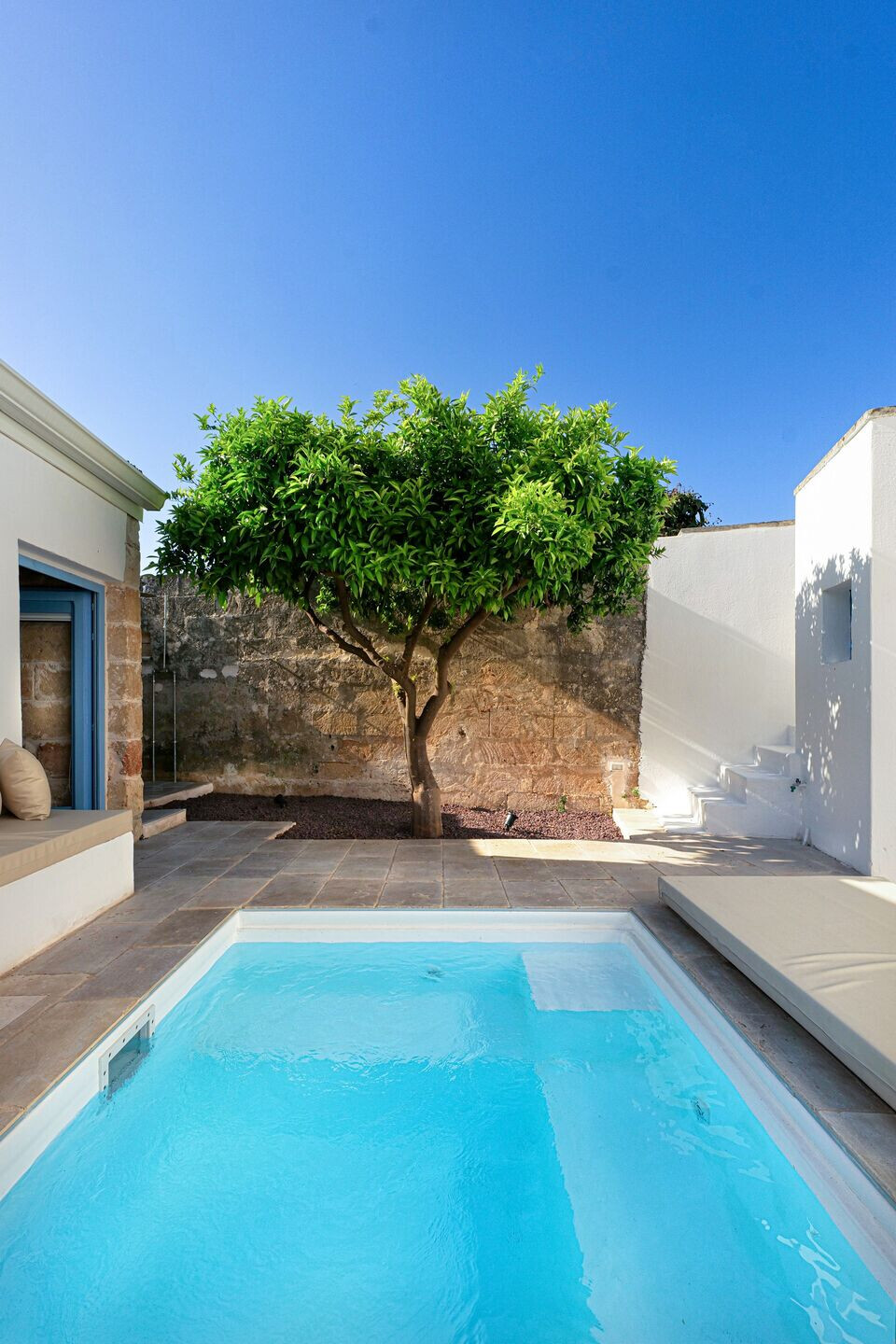
The typically Mediterranean materials and furnishings create a special outdoor living area that revolves around a twentieth-century fireplace in Lecce stone. The courtyard is enclosed by the small renovated stable, now converted into the master bedroom characterised by a roof made of bamboo canes. The high Carparo stone vaults create large rooms in the living quarters whose space is filled with various traditional furnishings, including two capasoni, large stone containers used in ancient times to hold wine and oil, and here used in the house as furnishing accessories. L’Aranceto is a village within a village, where one can take refuge from the hot summer days.
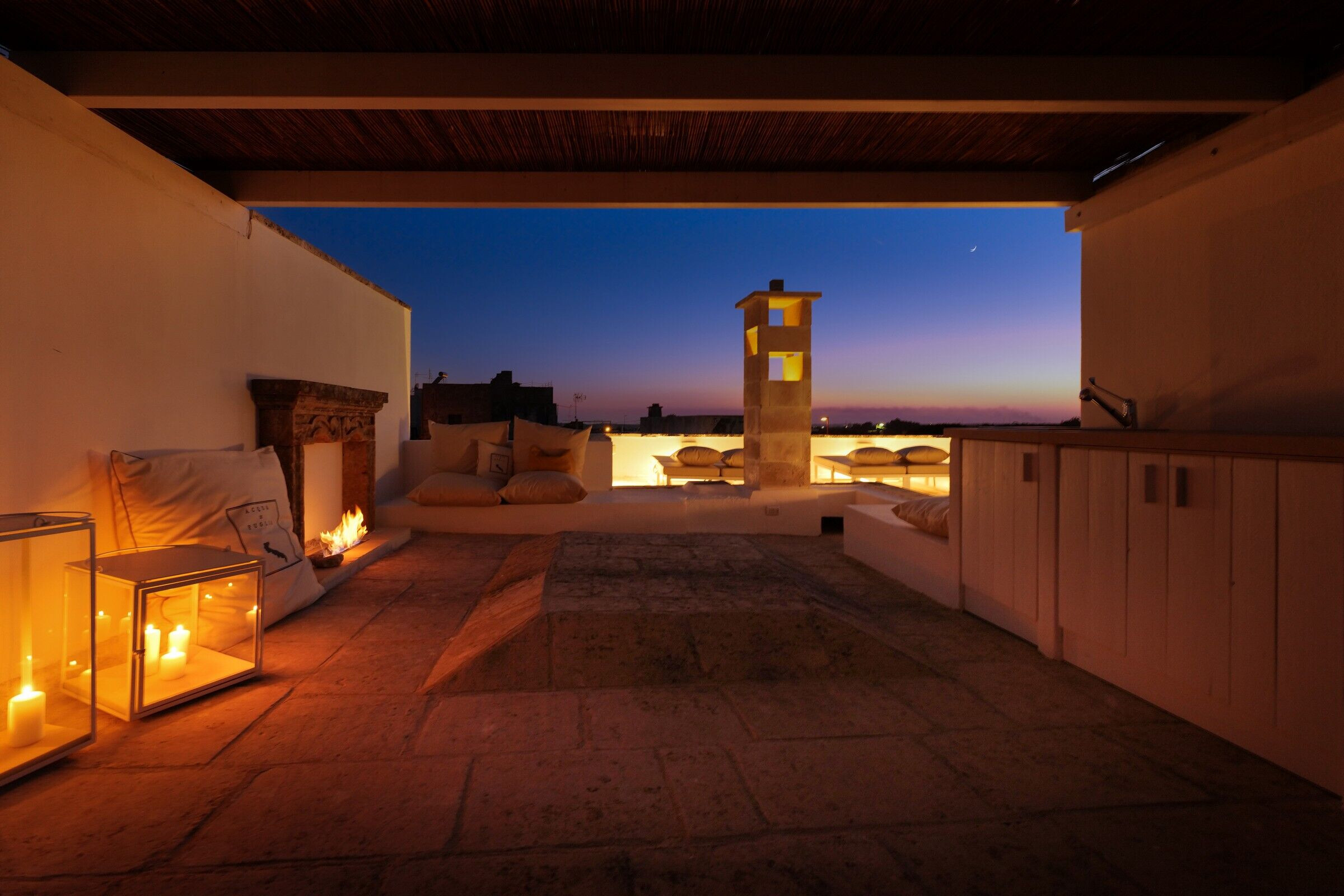
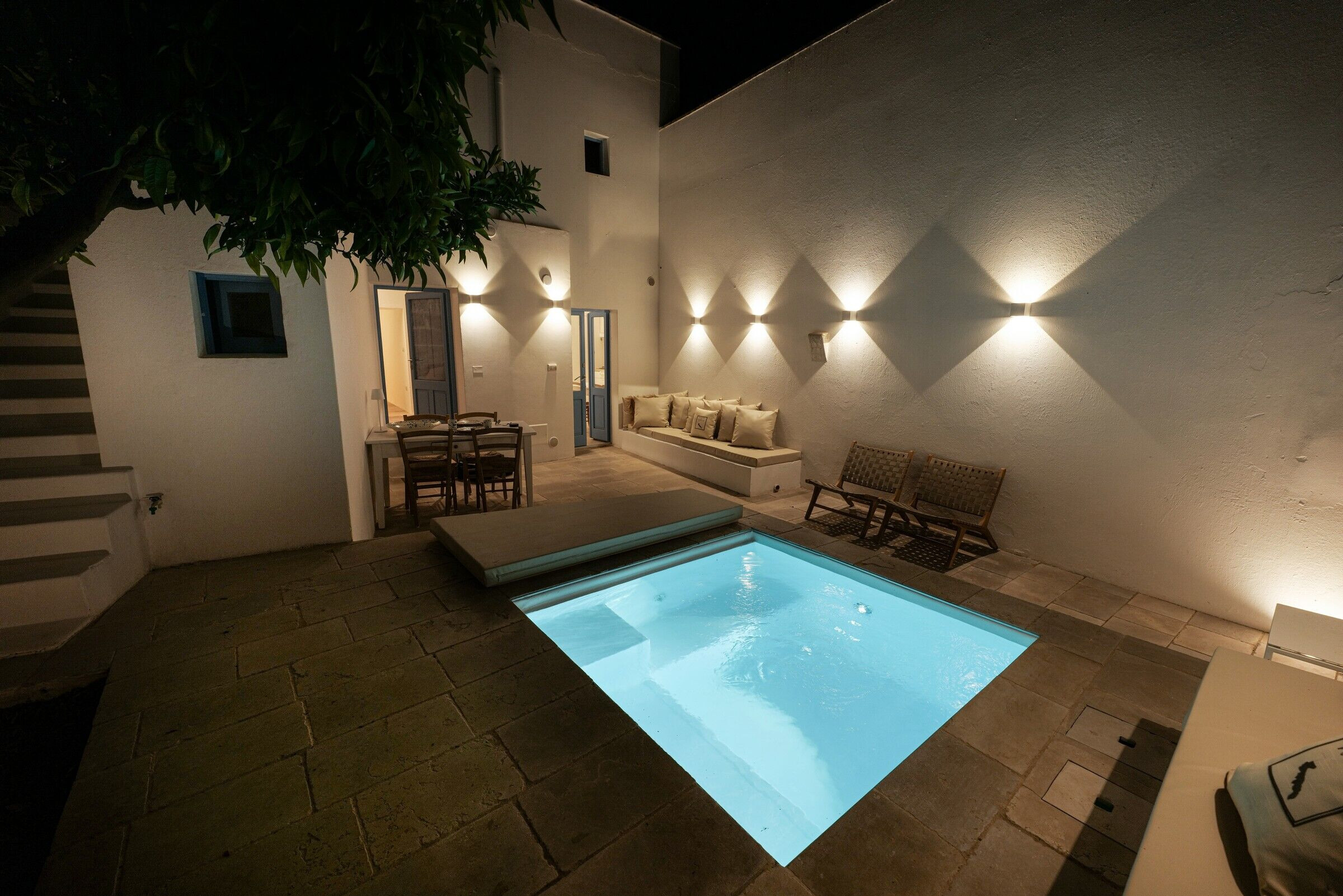
What were the key challenges?
For us, it is fundamental that our homes feature elements that translate the essence of this land, and it is for this reason that we rely on local realities that work with local raw materials to complete the furnishing of our structures, creating incredible objects. Our collaborators are simple, authentic and strictly local people: people who know how to work with their materials and who create unique pieces with their creativity. I have a wonderful memory of the day when, during our constant inspections, we met an old man from Gallipoli who was making fishing creels in his garage: passing by, the beauty of his production left us speechless. From that moment on, he became our craftsman of marvellous creels to hang on the walls as furnishing accessories.
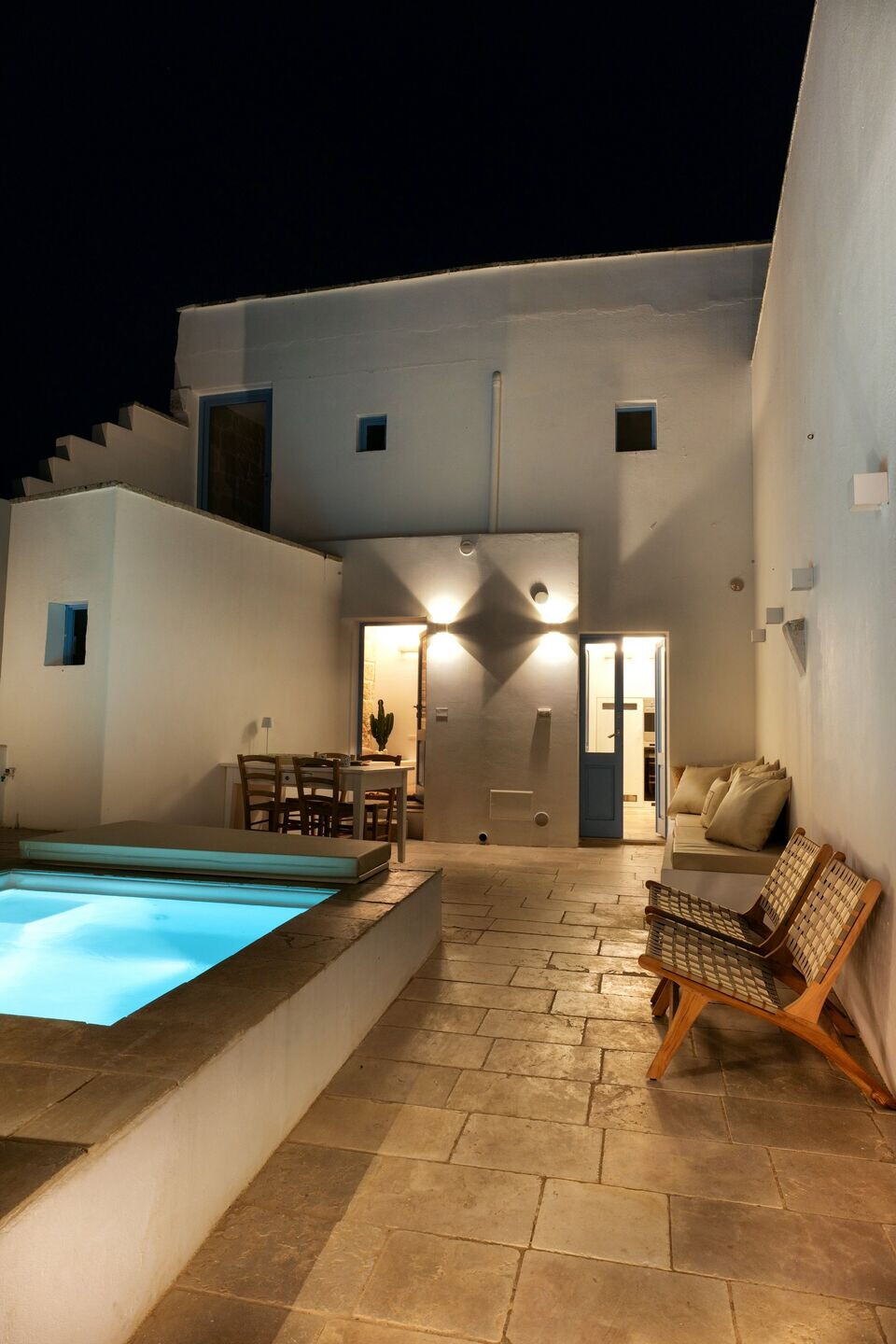
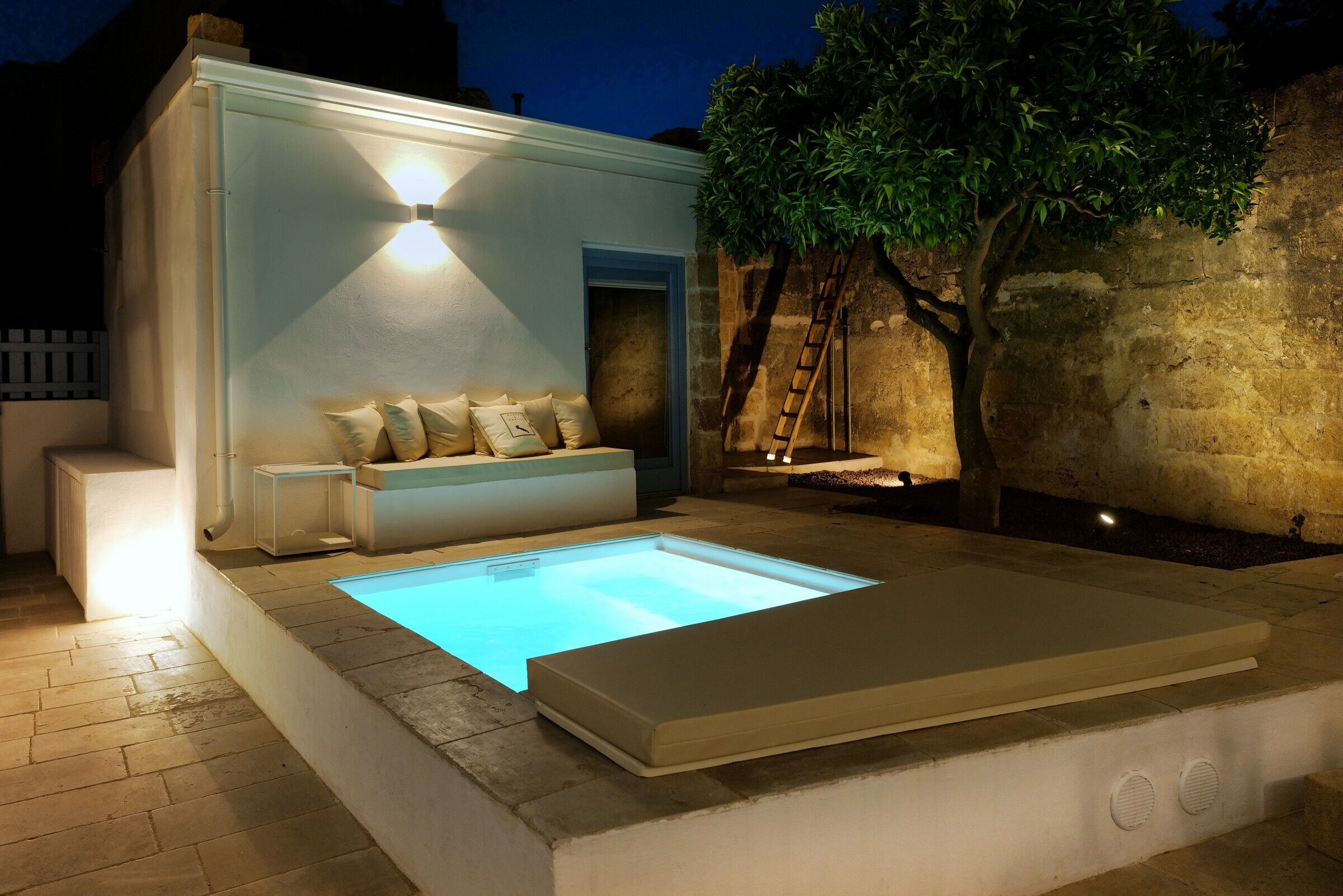
Real redevelopment of the territory can only start, in our opinion, from the people who inhabit it. We always involve the latter in our work, as we find that it is fundamental to fully understand a place by establishing a sincere relationship with those who have lived there for generations. We rely completely on the skill and artistry of the local labourers, who skilfully use their precious raw materials.
Apulia is an Italian region with a long and varied history: sea, countryside and historic centres intertwine to create an evocative and, to say the least, incredible landscape. Being a humble people with a great attachment to their land and large olive groves, the Apulians have been able to preserve the agricultural tradition by keeping both the historical centres and the countryside, where majestic masserie (farmhouses) stand intact.
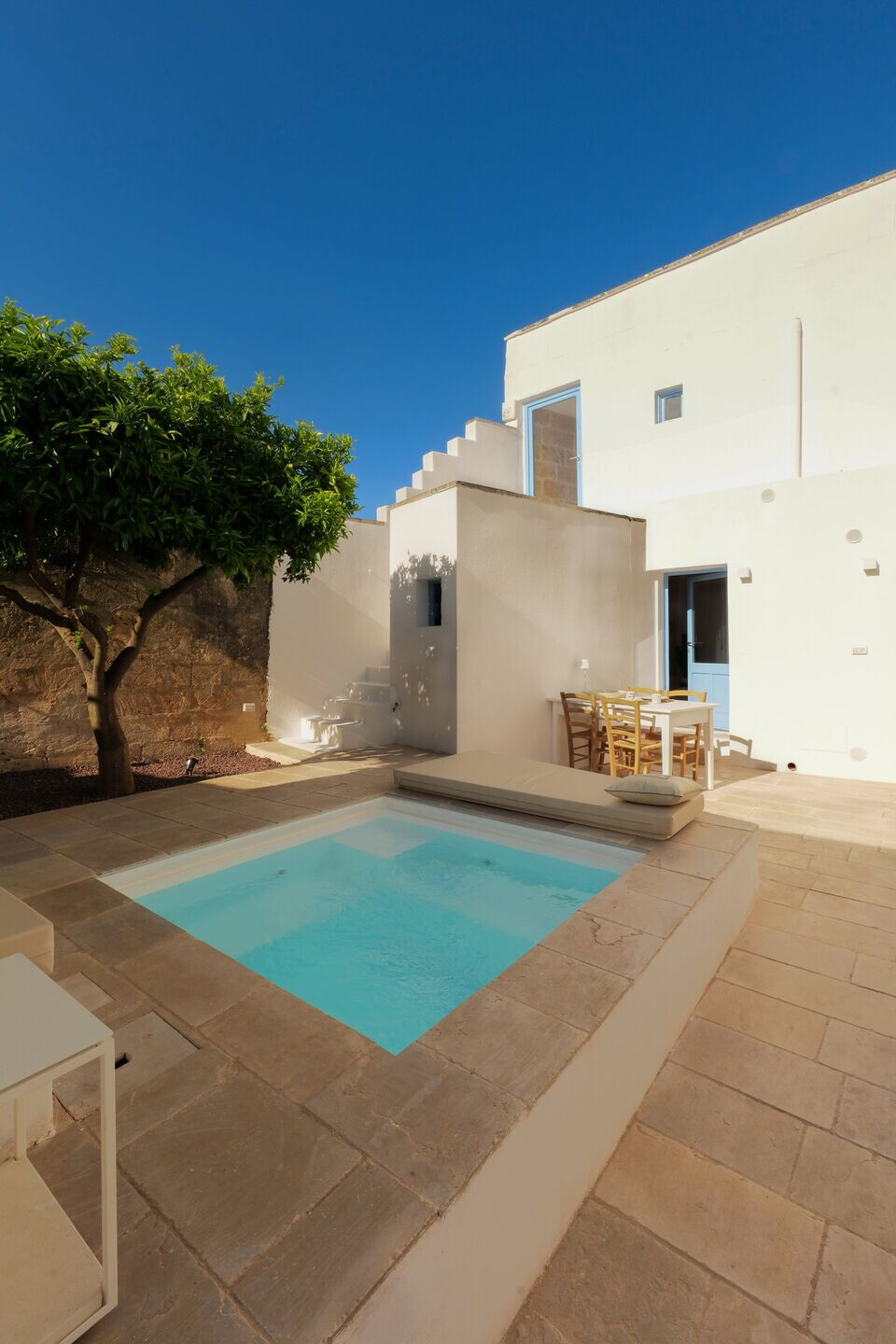
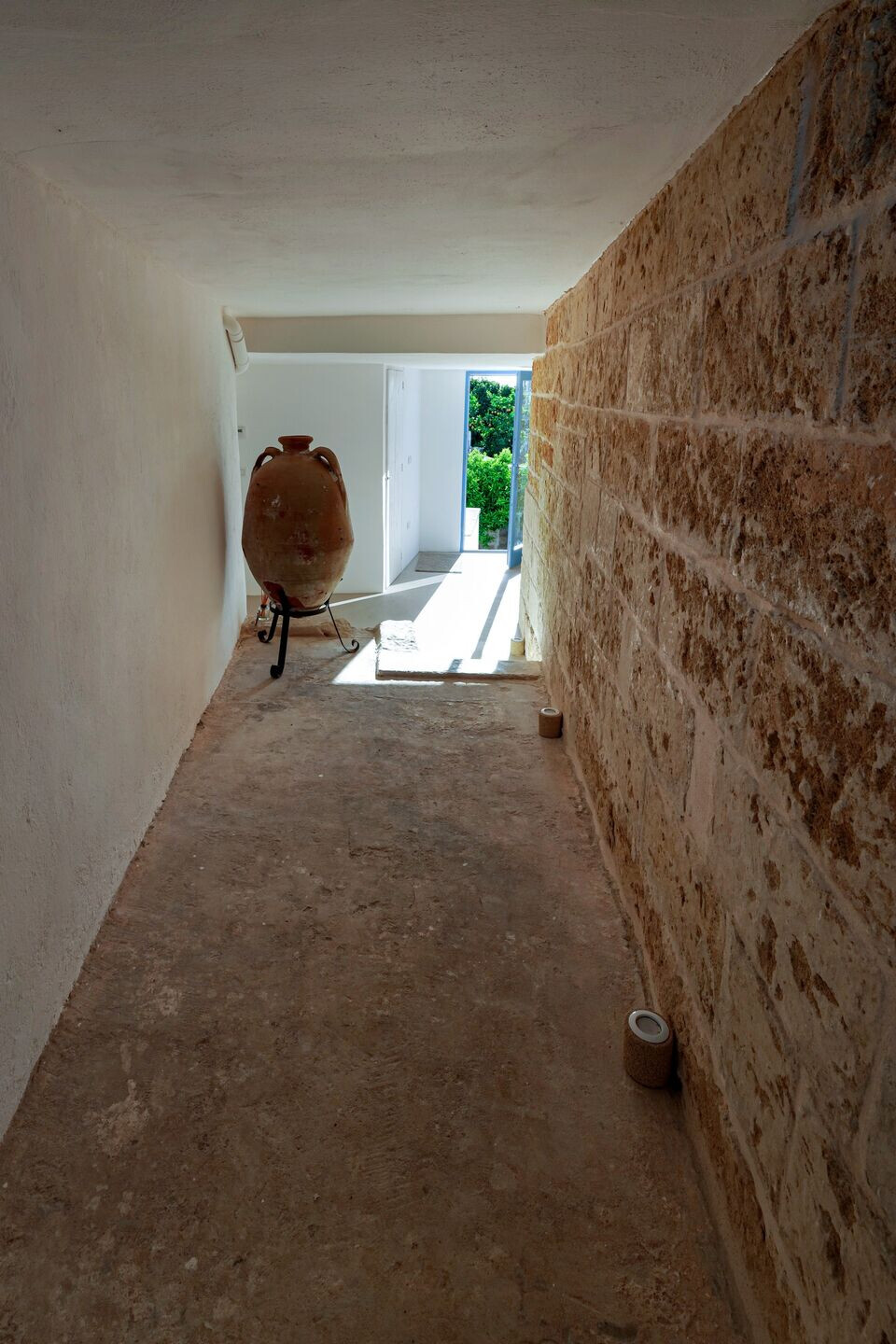
What materials did you choose and why?
The respect we pay to the raw materials and the structure we restore is absolute: being born in Italy means a lot to us. Our architecture is essential but at the same time the and warm, without being ostentatious: PIETRA LECCESE and PIETRA DI TRANI are The main materials we use, added to wood and aluminium.
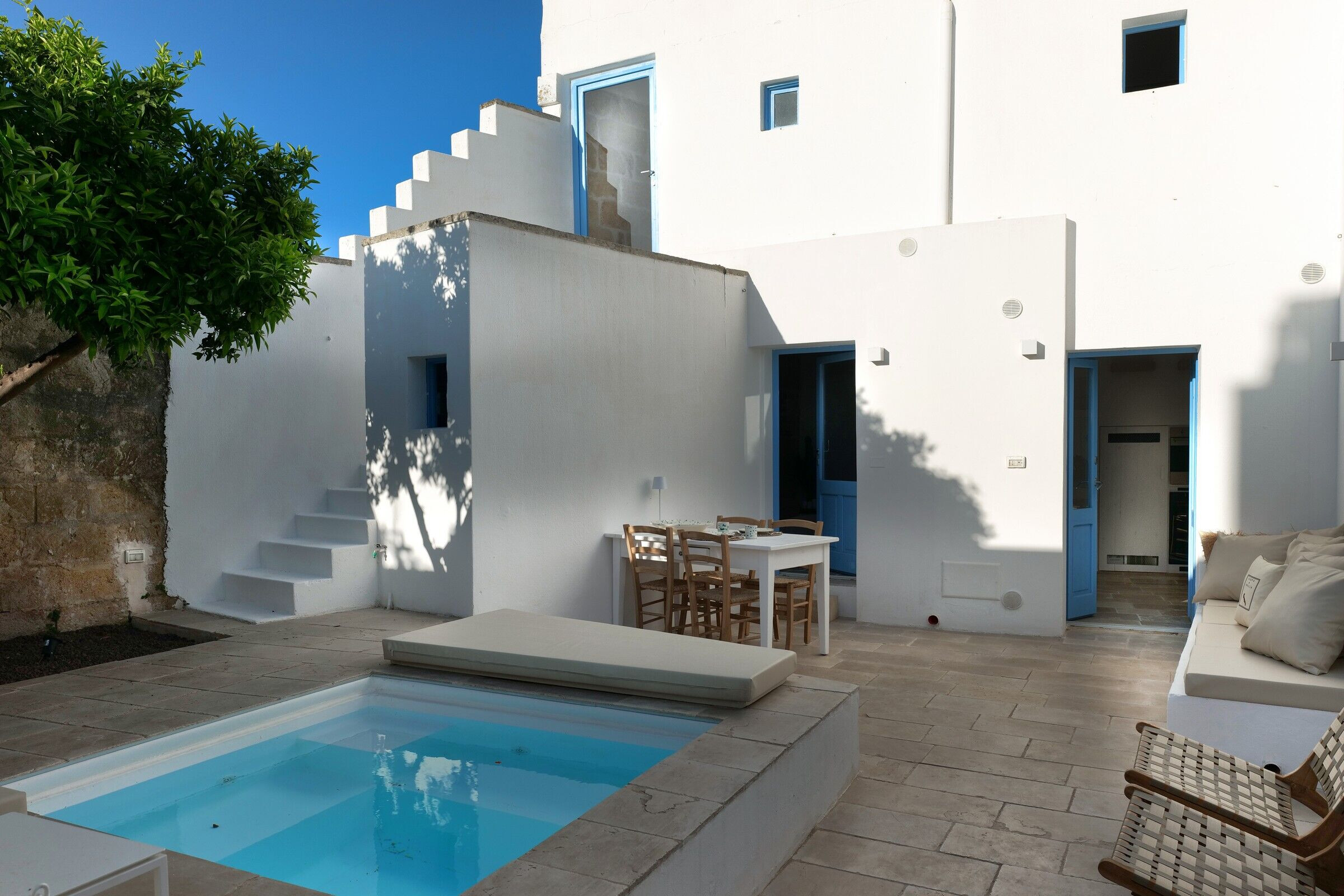
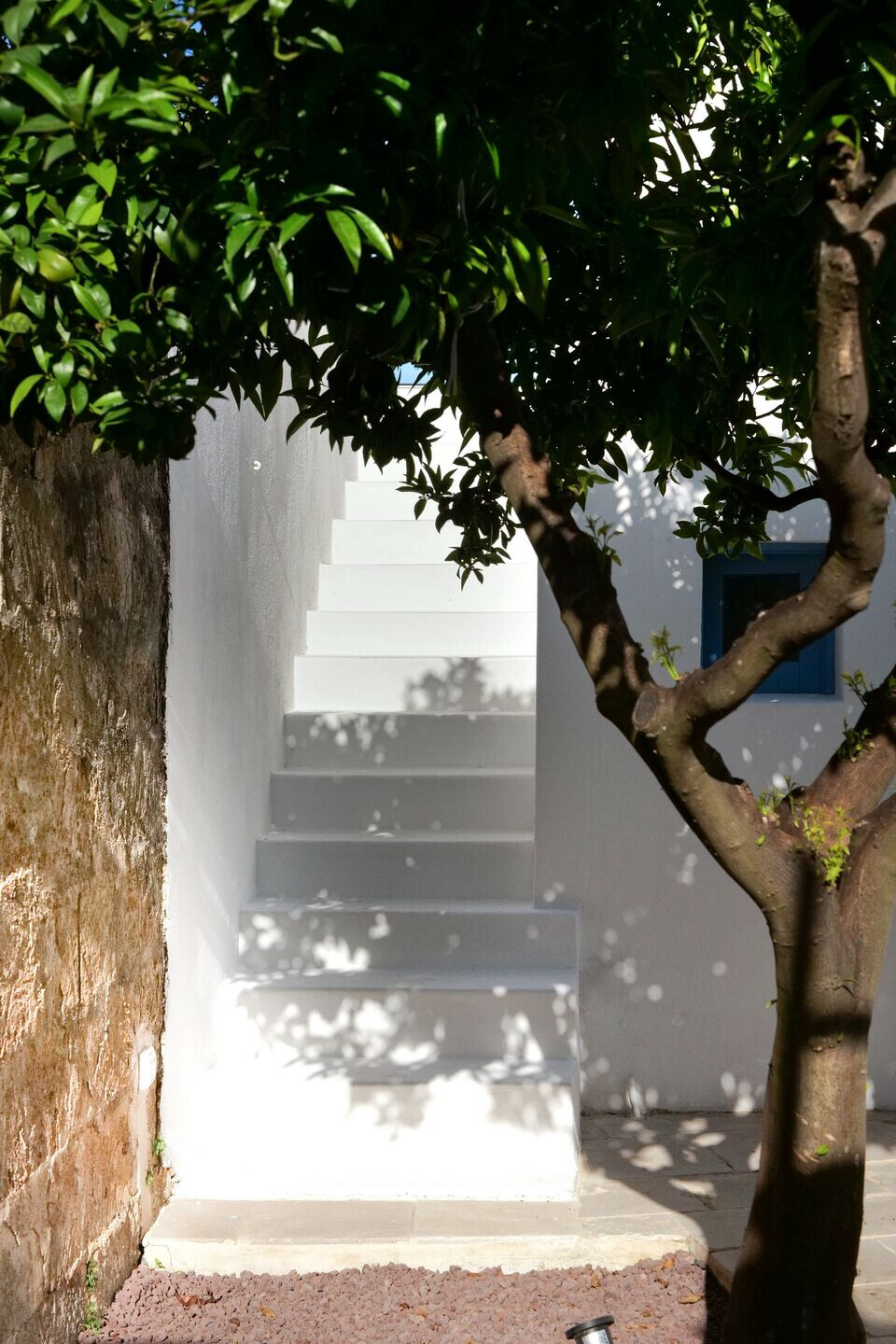
Team:
Architect: Acqua di Puglia
Photography: Silvia Brambilla
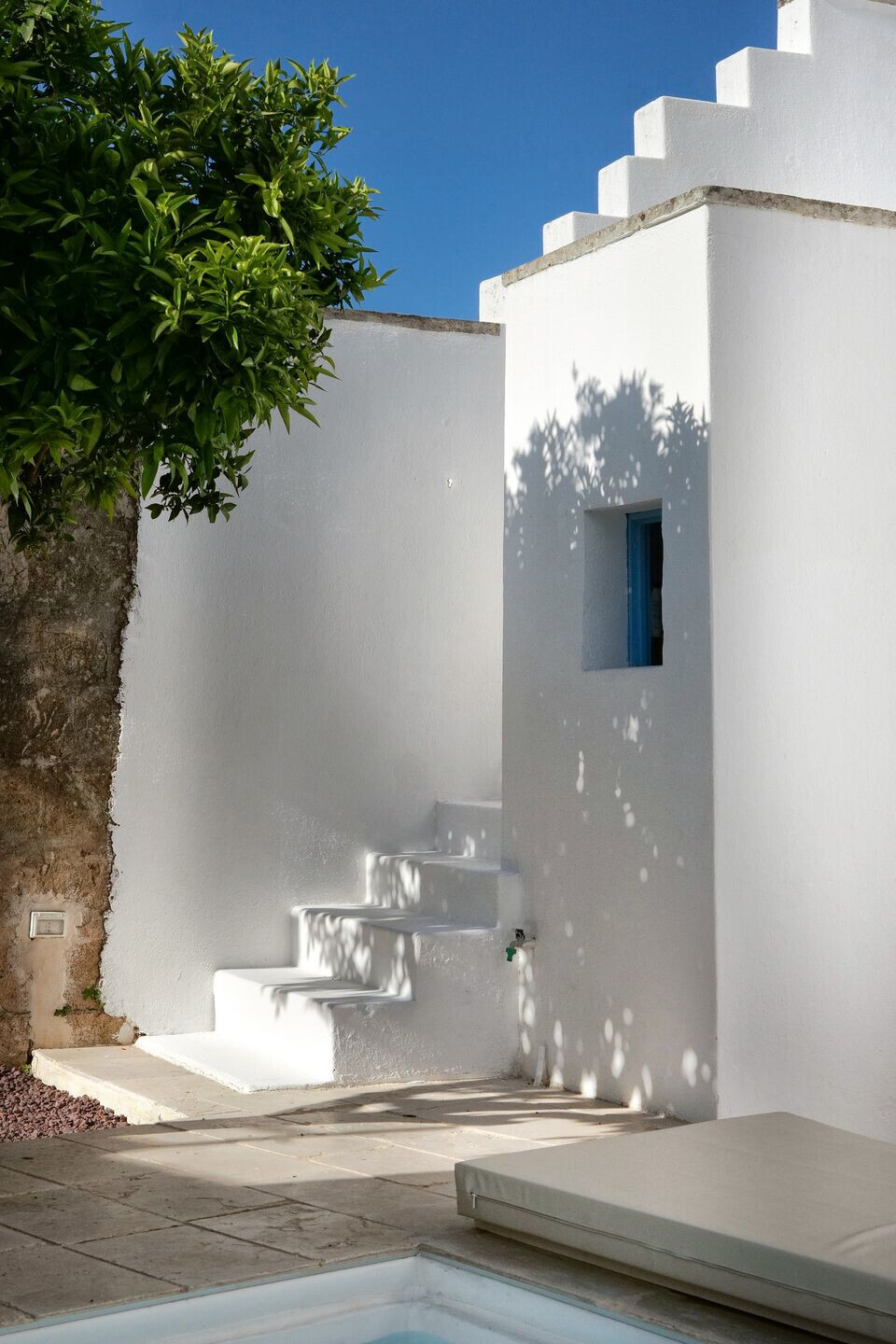
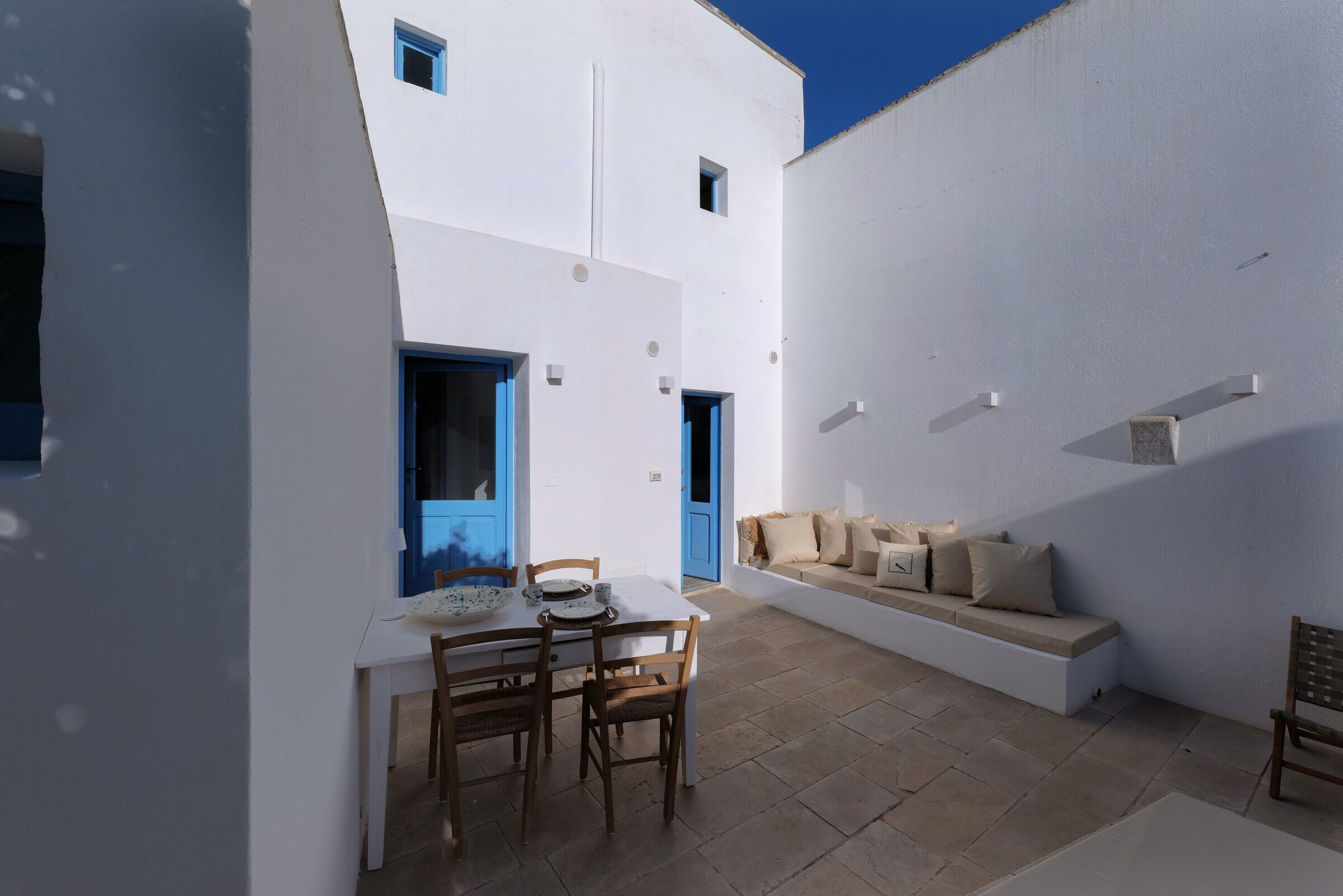
Material Used:
1. Facade cladding: Intonaco a calce bianca
2. Flooring: Pietra di Trani
3. Doors: Wood
4. Windows: Wood
5. Roofing: Pietra leccese
6. Interior lighting: Led with energy saving
7. Interior furniture: Local furniture made by local artisans - see section “interior design collection” on our website
